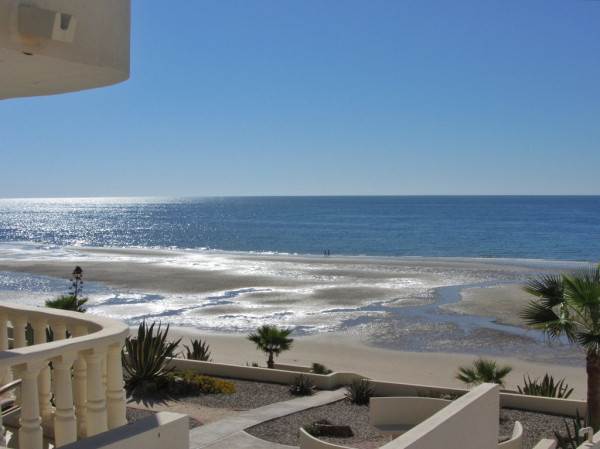For most people living in the US, “Latin America” is a far off place. For someone like me though, growing up in Arizona and just a few hours from Mexico, Latin America was a place we all knew. Mexico was not a distant vacation but a short road trip away. That was back when the border was open to US citizens and you didn’t even need a passport to cross. That was also back when the border area wasn’t quite so dangerous…
Puerto Peñasco, a small city on the northern edge of the Gulf of California, located just about 60 miles from the US – Mexico border, was where we would head on summer and spring breaks. The drive from central Arizona to the beaches in California was about 8 hours long while the drive to the beaches of Puerto Peñasco was 5-6 hours. We always headed south.

Fishing Village to Gangster Hideout
Puerto Peñasco today is filled with huge hotels and beach resorts, bright green golf courses in the middle of the desert and a very attractive 18 year old drinking age which attracts plenty of college students from the big Arizona universities. For someone who has seen the “real” Mexico, Puerto Peñasco sure looks like a tourist trap of timeshare presentations and “English Only” resort hotels.
I would love to tell you that Puerto Peñasco has a rich, cultural history… one you can find remnants of behind and between the luxury hotels. The truth though is that the history of Puerto Peñasco is directly tied to the influx of tourists from the North.
In the beginning there was no Puerto Peñasco; not really. This was the middle of the desert with no drinkable water source. Fisherman from further south in the Gulf of California would camp here when on fishing trips but no permanent establishment showed up until the 1920s.
One of the first settled residents of Puerto Peñasco was actually a gringo, a man from the US who came to Puerto Peñasco to build a casino and hotel. Prohibition had driven his bar business south and soon Puerto Peñasco became a luxury getaway for the rich and reportedly even for Prohibition gangster Al Capone. With the end of Prohibition, the gringos left but soon after the Mexican government added a railroad through this part of northern Mexico, creating an incentive for the development of a permanent fishing village. Puerto Peñasco as we now know it was born.
Arizona’s Beach?
History has a habit of repeating itself. While Puerto Peñasco did have a few years as a quiet fishing village, it has now become once again a getaway for the gringos of the north. It is actually more well known by its English name, Rocky Point, and while the fisherman are still here, the real business is in tourism.
Even the locals jokingly refer to Puerto Peñasco as Arizona’s beach. You’ll have no problem finding a hamburger and you’ll easily survive on the very basics of Spanish – hola y gracias. For more adventurous backpackers, it can be easy to dismiss Puerto Peñasco but it does hold a bit of charm… if you get far enough away from the gated-in resort hotels.
But Is It Safe?
If you ask the condo salesman if Puerto Peñasco is safe, he’ll tell you all about how the city is an island of calm and tranquility in this volatile border area. The official US stance is a little less optimistic. Puerto Peñasco is relatively safe, especially if you are staying in one of the resort hotels. That being said, you do have to drive about 60 miles from the border to reach Puerto Peñasco and the highways in Northern Mexico are anything but safe.
Use your best judgement and check recent travel advisories and warnings before heading out. It is also a really good idea to plan your trip so that you aren’t on the highway after nightfall.
Couple Travel Tips
- If you are driving in from Arizona, stop near the border and make sure you buy Mexican car insurance. Your US insurance won’t cover you south of the border and fender benders are definitely more common on the busy streets of Puerto Peñasco.
- Please, please for your own safety, stay away from the drugs. This area of Mexico is incredibly dangerous if you get mixed up in the wrong sort of crowd and the drug dealers are the worst sort.
- Be conscious of where your money is going. So much of the tourism here is US owned or operated meaning your tourist dollars are heading right back to the US instead of helping the local economy. When you can, eat at locally owned restaurants and support other locally owned businesses.



